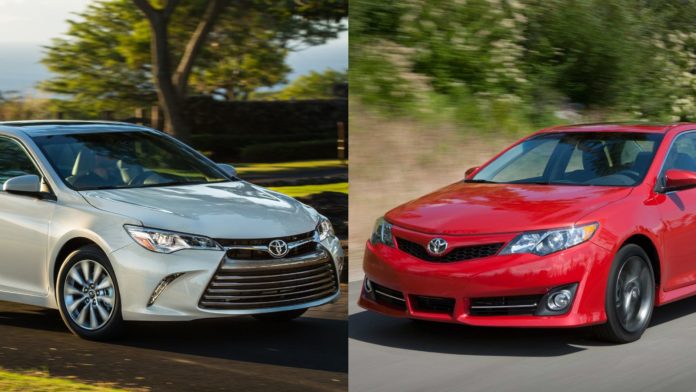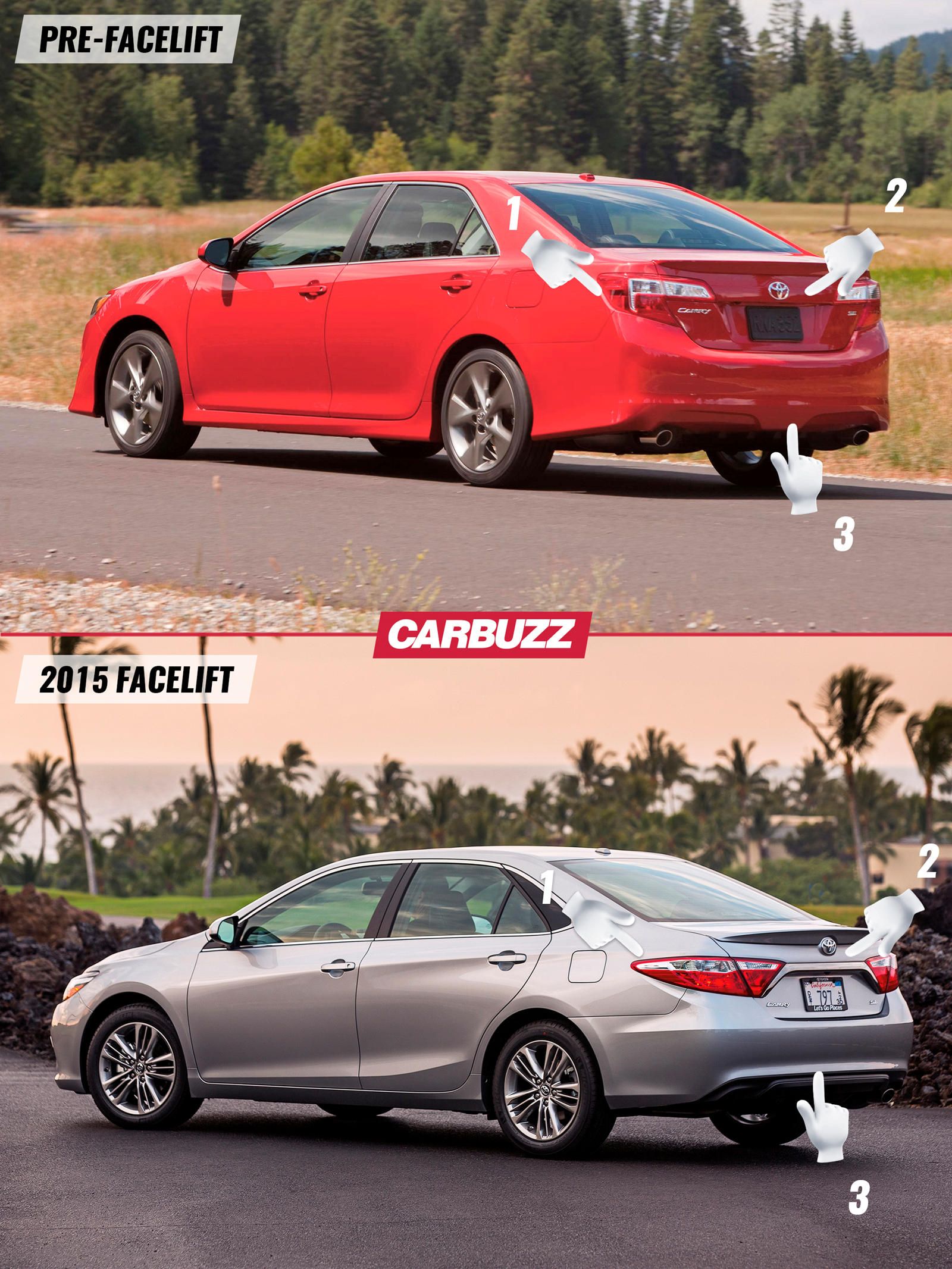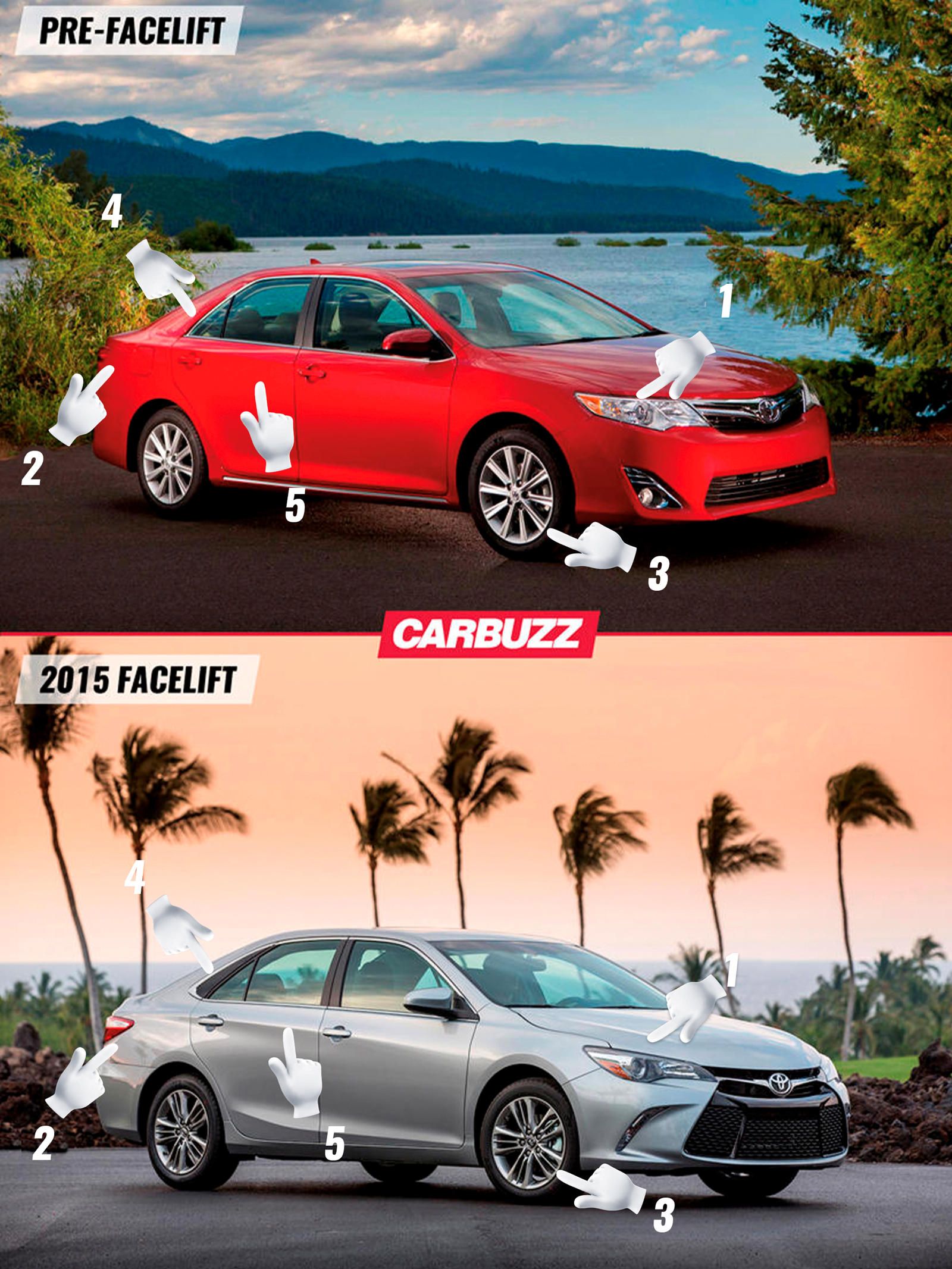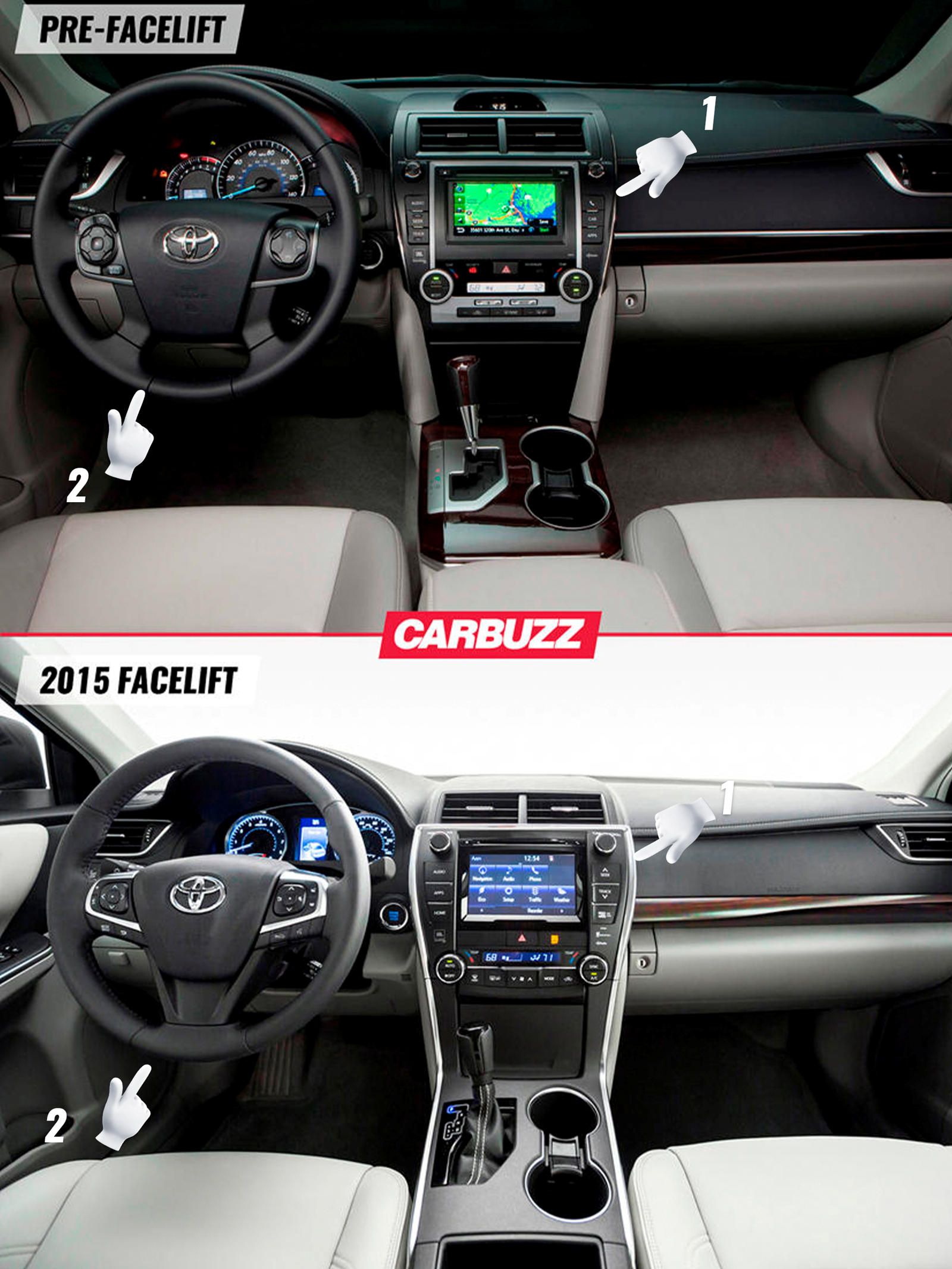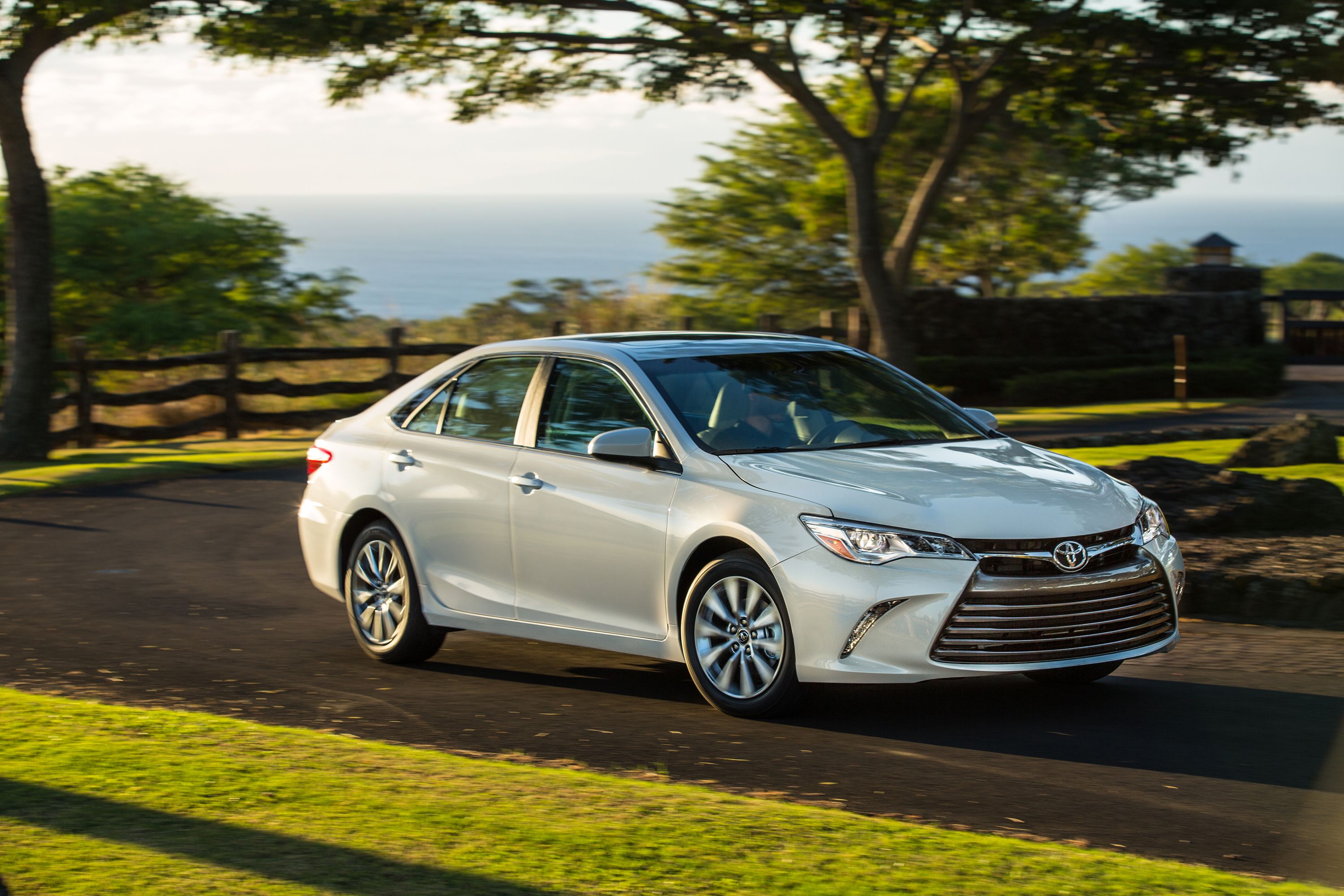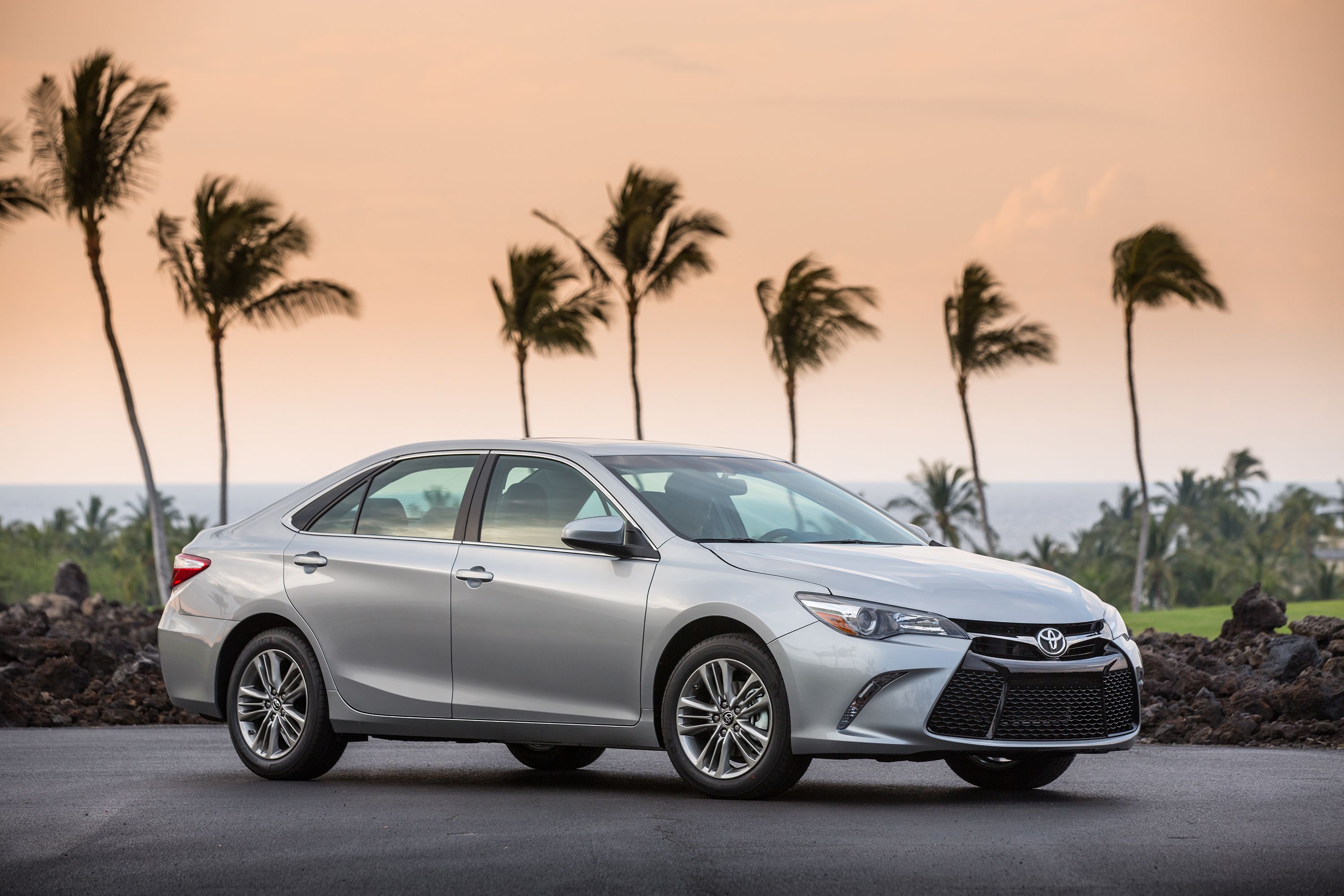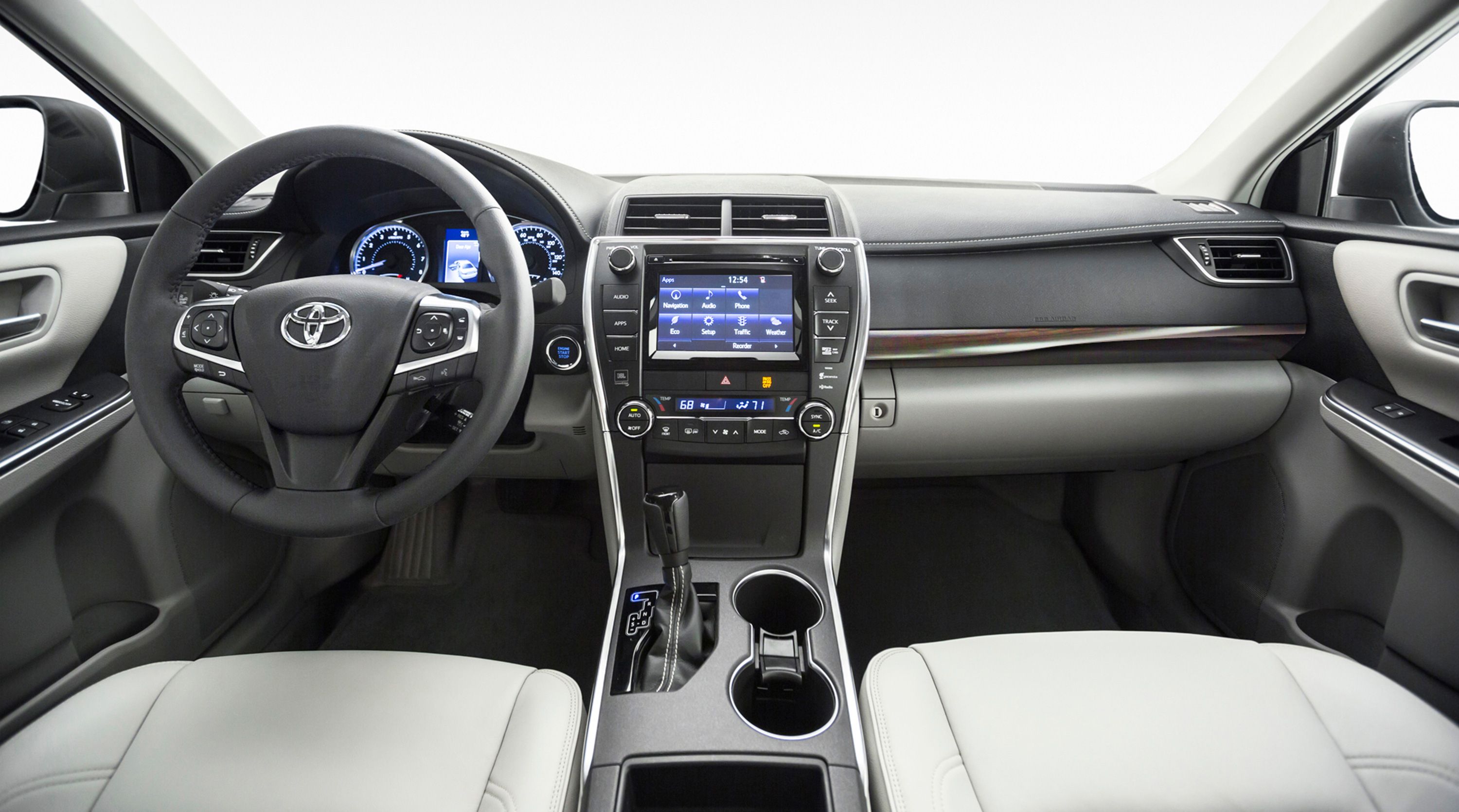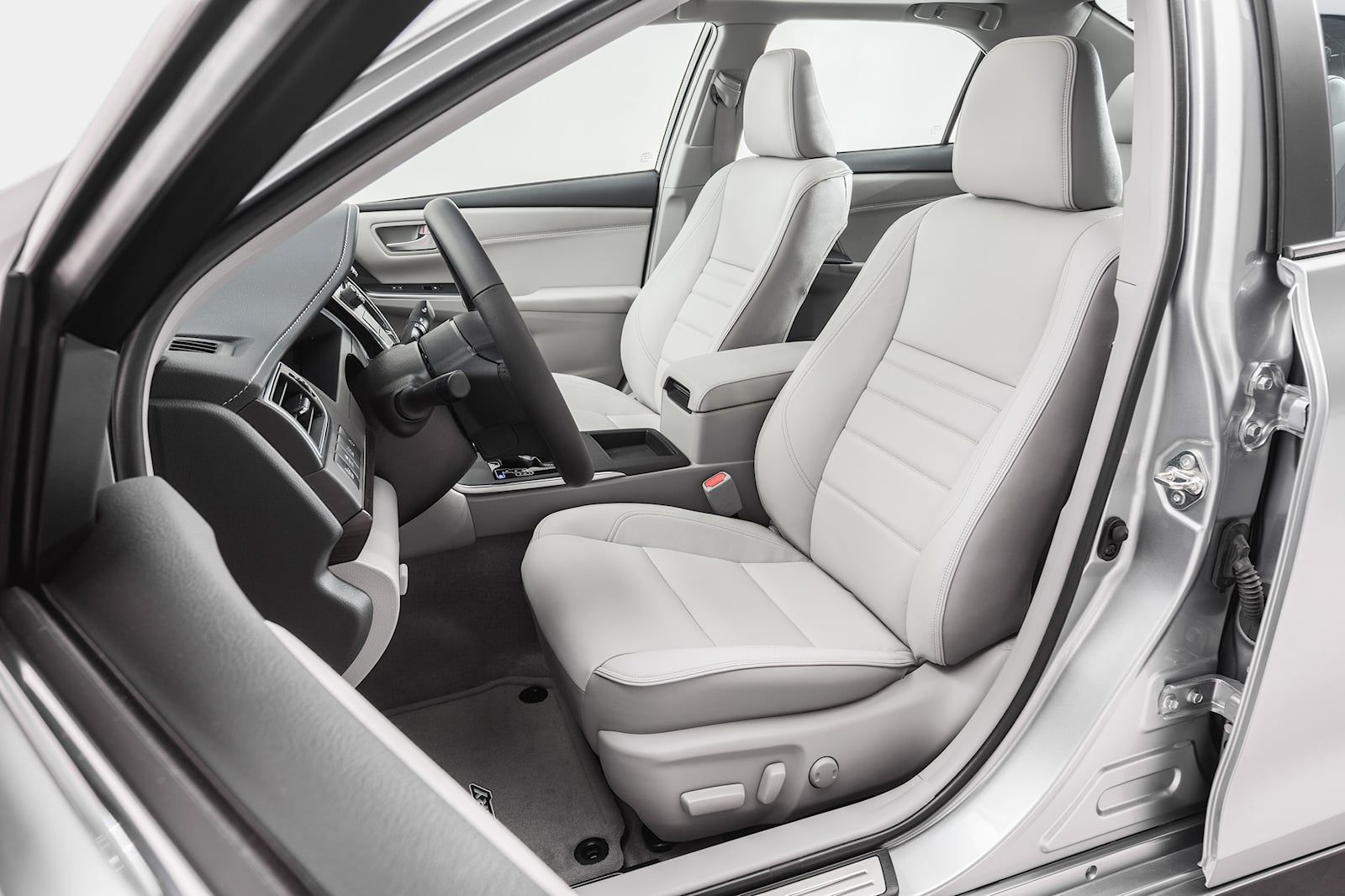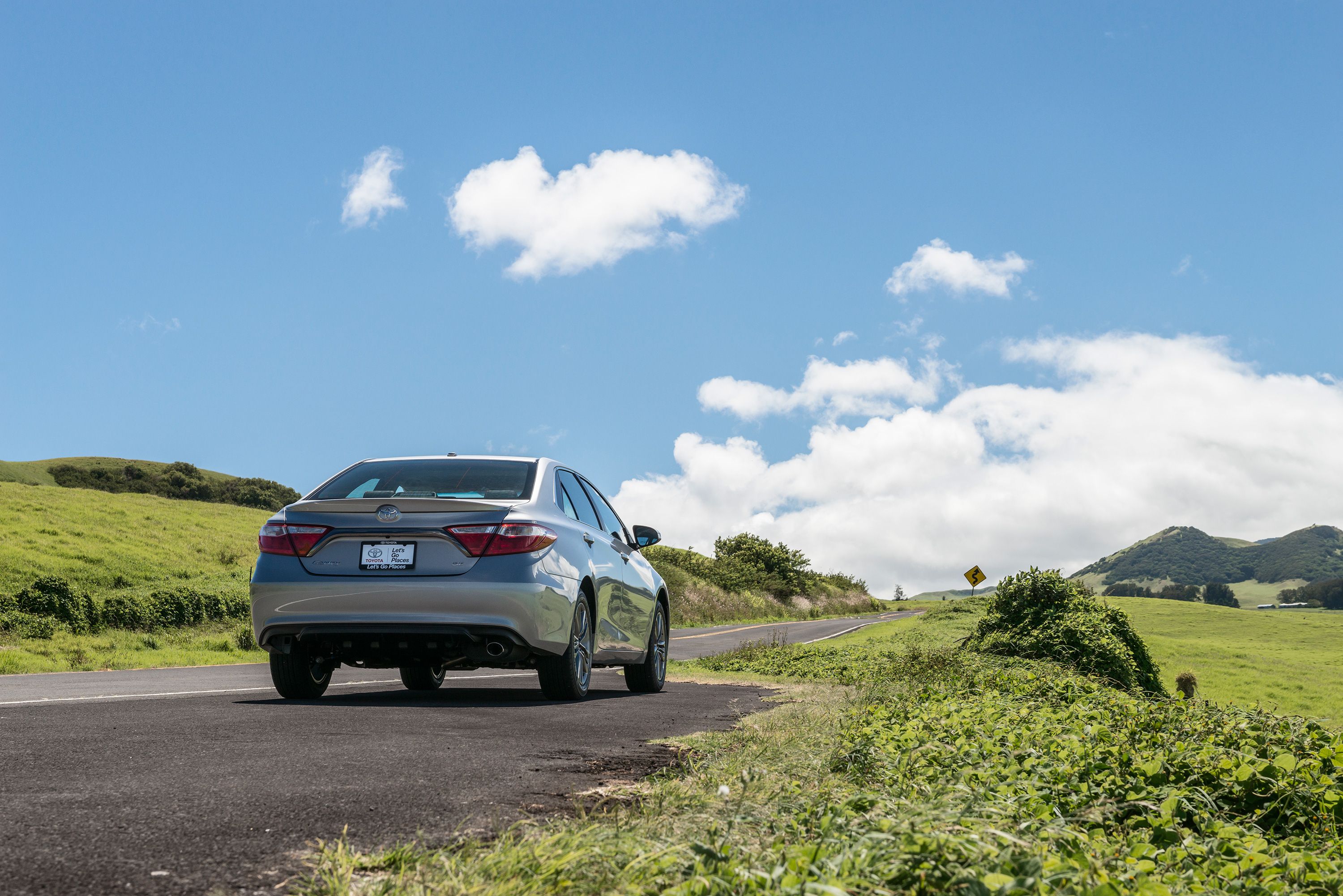Seventh-Generation Toyota Camry: What Owners Say
- Buyers of the Toyota Camry XV50 all report similar sentiments: the Camry is sturdy, comfortable, and spacious. The biggest drawcard is excellent gas mileage and near-bulletproof reliability, with nothing but regular maintenance required in line with the prescribed service advisories.
- The base four-cylinder engine has impressed owners, as has the six-speed automatic transmission. The Camry also holds its value well, yet used car prices are not exorbitant.
- Almost all buyer complaints are aimed at the base-spec derivatives. On these, the cloth upholstery is said to feel cheap.
- The chain-drive system – using a timing chain rather than a belt – results in a slightly noisy engine. The latter does make the Camry more reliable, however. In most of our other used car reviews, you’ll see issues with timing belts wearing out over time.
- The Camry hybrid XV50 is not the best driver’s car, and the engines, while decent, are not exhilarating.
- The infotainment system is livable, but in its later years, the Camry couldn’t match up to systems from rival manufacturers.
7th-Generation Toyota Camry Facelift
The 7th-gen Toyota Camry received a substantial upgrade near the end of 2014 as a 2015 model. Camry sales were starting to slip, so the facelift needed to be special. The exterior of the facelifted model is more Lexus-like. The engines were also carried over, and the V6 was made available on lower trim levels as it proved to be the most popular engine available.
At the front, it has a much bolder, Lexus-like pyramidal grille taking up the full height of the bumper, which makes it much easier to find in a parking lot filled with mundane sedans (1). The style of the grille changes according to the model; for example, it’s black mesh on the SE and XSE and contains a series of dark-gray slats on the XLE. In either case, it is topped by a horizontal chrome bar with the Toyota badge in its center. Toyota also incorporated bold slashes in the bumper underneath the headlights containing the turn signals and DRLs (2). The headlights are brand-new and more curvaceous (3). Thanks to the larger grille, the Toyota badge is more prominent (4).
The rear end is completely restyled and gone are the previous boomerang-shaped taillights (1) with the straight chrome strip between them. They are replaced by lozenge-shaped taillights spilling uninterrupted onto the trunk lid, with white-lensed turn signals and backup lights in a strip in their upper halves and an arch-shaped chrome trim piece connecting the clusters and serving as a brow for the numberplate holder (2). The bumper is completely restyled with single a horizontal crease and a raised dark lower valance, leaving a narrower piece of body-color bumper above it and visually lightening the heavy-handed treatment of the old car (3).
For once, a facelift’s changes are clearly visible from the side. The facelifted Camry’s totally revised head (1)- and taillights (2) can clearly be seen in profile, along with new wheel designs (3). Notably, the glasshouse has been visually lengthened by adding a black trim piece in the C-pillar to make the windows look larger and slim down the heavy C-pillar treatment (4). A stylish chrome slash somewhat resembling BMW’s “Hoffmeister Kink” finishes off this trim piece. The sheet metal is also a lot less slab-sided, with a pronounced crease running through the door handles (5).
Inside the cabin, Toyota improved the quality of the materials, giving it a more modern appearance. The center stack retains its layout but is restyled and receives a chromed frame and black HVAC controls in place of the previous black-and-gray setup (1). The rather unattractive four-spoke steering wheel is exchanged for a more modern and sporty-looking three-spoke item (2). The step-up in luxury is further enhanced by new windows and door seals that reduce road and wind noise and make the cabin a more pleasant place to spend time. The suspension was retuned to be more compliant, while a new XSE trim boasts a sportier suspension and sportier styling to match.
Engine, Transmission and Drivetrain
There are three engine options available for the seventh-generation Toyota Camry. These engine options are applicable to both pre-and post-facelift models. Toyota has all the bases covered with the Camry. If basic transport is the ultimate goal, the entry-level naturally-aspirated four-cylinder engine is adequate. If frugality is the ultimate goal, the Toyota Camry 7th-generation hybrid makes the most sense. To us, the V6 is the best option. The naturally aspirated V6 provides ample shove while remaining relatively frugal. All models send power to the front wheels exclusively. The traditional ICE engines use a six-speed automatic transmission, while the hybrid is only available with a continuously variable transmission (CVT).
2.5-liter Inline-4 Gas Engine 2AR-FE
|
Engine |
Transmission |
Drivetrain |
|---|---|---|
|
178 hp |
170 lb-ft |
Six-speed automatic |
The 2AR-FE 2.5-liter NA motor is reliable, save for the odd water-pump or VVTi issue, which we talk about later in the problems section. It was replaced by the new-generation dual-injection A25A Dynamic Force engine during the production run of the XV50 Camry’s successor, the XV70. The engine may seem relatively underpowered compared to the size of the car, but you won’t be holding up traffic – it reaches 60 mph in just over eight seconds. Toyota’s six-speed gearbox was considered old even when the XV50 Camry was new, but it matches the engine in terms of reliability. It may not be as smooth as a ten-speed ‘box, but you can rest assured that it will keep on swapping cogs long after the apocalypse. Toyota’s naturally aspirated engines and six-speed automatic transmission are the cockroaches of the automotive industry, and we mean that in the nicest way possible.
3.5-liter V6 Gas Engine 2GR-FE
|
Engine |
Transmission |
Drivetrain |
|---|---|---|
|
268 hp |
248 lb-ft |
Six-speed automatic |
The 3.5 V6 is just as reliable as the naturally aspirated four-pot. There are two main reasons why these engines are so reliable. First, Toyota designed both years ago and continues to refine them with every new generation. Secondly, they use timing chains instead of timing belts. As a result, the engines are a little noisier, but chains last much longer than belts and are less prone to fail. By 2012, virtually all the 2GR’s teething troubles have been solved, but ignition coils may prove to be a little short-lived. The most surprising thing about the V6 is its fuel consumption. Most of the power is delivered low down to give the Camry an effortless feel. There’s simply no need to go anywhere near the rev limiter. It also doesn’t have to work as hard as the four-cylinder engine, which is why the claimed fuel consumption figures are so close.
2.5-liter Inline-4 Hybrid Engine 2AR-FXE
|
Engine |
Transmission |
Drivetrain |
|---|---|---|
|
156 hp |
156 lb-ft |
CVT automatic |
- Electric motors: A permanent-magnet AC synchronous electric motor
- Power: 141 hp/105 kW
- Torque: 199 lb-ft
- Engine + electric motor hybrid system output: 200 hp
Toyota has been mass-producing hybrids for more than two decades. Like the two traditional gas options, this powertrain is reliable if somewhat unrefined. The CVT transmission is equally uninspiring, but the EPA claimed fuel consumption figures of 42/38/40 mpg city/highway/combined are mighty impressive. The 2AR-FXE 2.5-liter inline-four in the Camry Hybrid is an Atkinson-cycle variant of the normal 2AR-FE engine and therefore develops less power and torque – 156 hp and 156 lb-ft. However, it is supplemented by an electric motor worth 141 hp and 199 lb-ft and a sealed 1.6-kWh Ni-MH battery pack to boost the system output to 200 hp, enabling this thrifty Camry to sprint to 60 mph in a competitive 7.4 seconds. There is one unfortunate reality, however, and it’s not limited to Toyota. Batteries degrade over time, which means this car will become less efficient the older it gets. Even the most modern battery packs only have a life expectancy of ten years and the unit in the Camry is guaranteed for eight years or 100,000 miles. Keep in mind that the replacement battery alone costs more than $3,500.
2012-2017 7th-Gen Toyota Camry Real MPG
All three engine options are surprisingly frugal, with the hybrid being the obvious champion. Even the high-output V6 comes with reasonable fuel consumption figures that you would not normally associate with a naturally aspirated V6. We have even better news for you. When a car gets replaced by a newer model, the EPA usually gathers data from owners to get a real-life consumption figure. The Camry can be even more frugal than the estimated figures suggested. Various owners claim the V6 is even more frugal than the four-cylinder, simply because it doesn’t have to work as hard. All Camrys boast a decent gas-tank size, so you don’t have to worry about refueling often.
|
EPA MPG |
REAL WORLD MPG * |
|
|---|---|---|
|
2.5 NA four-cylinder |
24/33/27 |
26.2-29.3 |
|
3.5 V6 |
21/30/24 |
24.5-27.6 |
|
Hybrid LE42/38/40 |
42/38/40 |
34.9-42 |
|
Hybrid XLE |
40/37/38 |
37.2-41.9 |
* Real-world mpg and MPGe figures are provided by the EPA. Once a car has been on sale for a significant period of time, the EPA gets real-world figures directly from the customer base. These figures are then provided on the EPA website. Real-world figures are not available for certain models due to a lack of sales, or not enough people partaking in this after-sales survey.
Safety
model. When the XV50 first made its debut in 2012, driver-assistance features weren’t as common as they are currently. For 2013, a rear cross-traffic alert function is added to the optional blind-spot monitoring system. All late-2014 Camrys get a standard backup camera and improved crash-test scores. For the 2015 facelift, Toyota added pre-collision, adaptive cruise control, lane-departure alert, and blind-spot monitoring as part of the optional Advanced Technology package, and Safety Connect – which comprises automatic collision notification, a stolen-car locator, and an emergency assist button – is optional on the XLE only.
Pre-facelift models are still equipped with the basic active and passive safety features, including eight airbags (including knee airbags in front), ABS, traction and stability control, tire-pressure monitoring, daytime running lights, and powerful headlights. As a legacy of the massive recalls of Toyota vehicles for unintended acceleration in the first decade of the 2000s, the Camry is also fitted with Smart Stop Technology (SST) that overrides the accelerator if the brake pedal is pressed at the same time. The only model to avoid is the rental-spec pre-facelift L. It’s as devoid of features as a hole in the ground. Fortunately, the Camry comes with a decent NHTSA safety rating, applicable throughout its production run.
US NHTSA Crash Test Result
|
Overall Rating |
5/5 |
|
Frontal Barrier Crash Rating |
4/5 |
|
Side Crash Rating |
5/5 |
|
Rollover Rating |
4/5 |
7th-Gen Toyota Camry Trims
Most Camry trim levels remained the same throughout its lifecycle, but two trims were dropped and one was added with the facelift. The trims are detailed and quite confusing, in typical Toyota fashion, with the same trim level not always having the same equipment if it’s ordered with an optional engine like the V6. Not even the options and extras are standardized – their availability varies depending on where in the country the car was bought when it was new. It is therefore very important to carefully check what a used Camry has actually been fitted with.
Annual improvements were made to the entire lineup and the addition of a feature to a lower trim usually means it’s also been added to the higher trims that didn’t already have it, unless indicated otherwise. Trim-specific changes are shown below. Range-wide changes were also made, like upgraded door-panel trim and the standardization of the 6.1-inch infotainment touchscreen on all trims for 2013 incorporating HD Radio, satellite radio, and an iPod/USB interface. Late-2014 Camrys all have standard backup cameras and better safety scores and are worth looking out for over the earlier models. In-car infotainment is further upgraded with the 2015 addition of the Entune touchscreen system, while the exterior is completely restyled and the interior materials and styling upgraded.
2012-2014 L
|
Engine |
Transmission |
Drivetrain |
|---|---|---|
|
2.5-liter four-cylinder |
Six-speed automatic transmission |
FWD |
If ever a trim epitomized the rental-car mentality, the Camry L is it. Features include manual halogen headlights, 16-inch steel wheels, manual air-conditioning, a manually tilting/telescoping steering column, cloth upholstery, 60/40-split/folding rear seats, cruise control, and Bluetooth integration, USB jacks, and auxiliary input for the six-speaker audio system. The most annoying thing about it is that you have to use a key to unlock the car. It’s available exclusively with the 2.5-liter four-cylinder engine. Toyota discontinued the L as part of the 2015 facelift, with the LE demoted to entry-level status.
2012-2017 LE
|
Engine |
Transmission |
Drivetrain |
|---|---|---|
|
2.5-liter four-cylinde/ 2.5-liter four-cylinder hybrid |
Six-speed automatic transmission / CVT |
FWD |
The LE is still relatively spartan, adding remote keyless entry, power locks, automatic headlights, an ambient temperature display, audio control on the steering wheel, and an infotainment system that isn’t brilliant, but it gets the job done and at least includes Bluetooth audio streaming. The trim level for the hybrid is exactly the same as the ICE car. It does have a few model-specific touches, but nothing that has an impact on the overall driving experience. The 2015 LE becomes the new base model after the L’s discontinuation and gains an eight-way electrically adjustable driver’s seat and the new Entune infotainment system along with the rest of the lineup.
2012-2017 SE
|
Engine |
Transmission |
Drivetrain |
|---|---|---|
|
2.5-liter four-cylinder / 3.5-liter V6 / 2.5-liter four-cylinder hybrid |
Six-speed automatic transmission / CVT |
FWD |
If you want a Camry with sporty styling and an affordable price tag, the SE with the four-cylinder engine is the entry point to the ‘sporty’ range of Toyota midsize sedans. The projector headlights feature black bezels, there are fog lights, the side mirrors are heated, the wheels are 17-inch alloys, the suspension has a stiffer tune, and the front grille is sportier. Inside, a combination of Sport Cloth and Softex adorns the sport seats, the steering wheel is trimmed in leather with shift paddles, and the interior trim swaps wood-look panels for silver panels. The SE V6 furthermore gains 18-inch alloy wheels and an upgraded infotainment system incorporating satellite radio, HD Radio, navigation, Entune smartphone and web integration, and voice recognition. Like the V6, the Hybrid SE Limited Edition (debuting as a 2014 model) has mostly the same specification, with the main differences being under the skin. For 2016, an SE Special Edition sees smoked taillights, a sunroof, 18-inch alloys, keyless entry and start, hands-free trunk opening, blue interior contrast stitching and seat inserts, wireless phone charging, the Entune Audio Plus package, and a sportier gauge cluster added to the standard SE.
2015-2017 SE V
|
Engine |
Transmission |
Drivetrain |
|---|---|---|
|
3.5-liter V6 |
Six-speed automatic transmission |
FWD |
The V6 SE matches the four-cylinder’s specification. The only difference is the bigger engine and an increase in performance.
2014 SE Sport
|
Engine |
Transmission |
Drivetrain |
|---|---|---|
|
2.5-liter four-cylinder |
Six-speed automatic transmission |
FWD |
Based on the SE, the SE Sport adds a few extras to appeal to a sportier market, with 18-inch alloy wheels, an electrically adjustable driver’s seat, and a power tilt-and-slide sunroof. Oddly, the SE Sport is only available with the four-cylinder engine, and not the more powerful V6. It was only available for one model year.
2015-2017 XSE
|
Engine |
Transmission |
Drivetrain |
|---|---|---|
|
2.5-liter four-cylinder / 3.5-liter V6 |
Six-speed automatic transmission |
FWD |
The XSE is available with the 2.5 four-pot or the V6 and joined the facelifted 2015 lineup. Regardless of the engine, it comes with LED daytime running lights and 18-inch alloy wheels. Inside, it has dual-zone climate control, sportier power-adjustable heated front seats, and leather and imitation-suede upholstery. The XSE with the V6 under the hood has all of the features mentioned above, plus LED headlights, a sunroof, an acoustic noise-reducing windshield, keyless start, an auto-dimming rearview mirror, a wireless charging pad, and a larger seven-inch Entune infotainment touchscreen with navigation. For its final 2017 model year, wireless charging and an upgraded Entune Audio Plus linked to a JBL audio system becomes standard.
2012-2017 XLE
|
Engine |
Transmission |
Drivetrain |
|---|---|---|
|
2.5-liter four-cylinder / 3.5-liter V6 / 2.5-liter four-cylinder hybrid |
Six-speed automatic transmission / CVT |
FWD |
The four-cylinder XLE is less sporty on the outside but adds more luxury on the inside. It comes with 17-inch wheels that, coupled with a softer-tuned suspension from the LE, provide greater comfort. Both the four-cylinder and V6 XLEs have essentially the same luxury features as the corresponding XSEs, but without the sporty trim and other accouterments or the bigger wheels, and with full leather upholstery instead. Like the V6, the hybrid comes with all the toys mentioned earlier. The main differences are under the skin, and a few model-specific touches to the instrument cluster and touchscreen interface, which can display hybrid-specific information. The 2017 XLE gets the same spec updates as the 2017 XSE.
7th-Gen Camry Sedan Features
|
L |
LE |
SE SPORT |
XSE |
XLE |
|
|---|---|---|---|---|---|
|
Back-Up Camera |
S |
S |
S |
S |
S |
|
Bluetooth Connection |
S |
S |
S |
S |
S |
|
Leather Seats |
N/A |
N/A |
N/A |
N/A |
S |
|
Apple CarPlay |
N/A |
N/A |
N/A |
N/A |
N/A |
|
Keyless Entry |
N/A |
S |
S |
S |
S |
|
Keyless Start |
N/A |
N/A |
S |
N/A |
S |
|
HD Radio |
N/A |
S |
S |
S |
S |
|
Alloy Wheels |
N/A |
N/A |
S |
S |
S |
|
Sunroof |
N/A |
N/A |
S |
N/A |
S |
Interior, Trim And Practicality
Prior to the facelift, Toyota offered the Camry in five trims: the L, LE, SE, SE Sport, and XLE. After the facelift, Toyota continued on with the LE, SE, XSE, and XLE. There’s an easy way to tell the models apart. Models with L in their name (LE and XLE) focus more on comfort and luxury, while those with an S in the name (SE and XSE) are slightly sportier, with more aggressive styling. The interior trims match this theme, with most luxury-biased models getting faux wood trim on the dashboard, while the sportier models get faux metal trim.
The Camry’s main selling point has always been practicality and comfort. It’s a full five-seater with copious amounts of leg and headroom. The 15.4 cubic foot trunk is large enough for the weekly grocery run, but packing for a longer trip will require some Tetris skills. It’s worse on the hybrids, which offer only 13.1 cubes, although this is significantly better than the previous-generation Camry hybrids. As for the upholstery, the only model to avoid is the pre-facelift L. Toyota saved a lot of cost by removing higher-quality trim, most of the luxuries, and fitting cheap upholstery. Years later, this upholstery looks disgusting and ruins the entire interior.
|
TRIM |
LX |
SPORT |
SPORT SE |
EX |
EX-L |
|---|---|---|---|---|---|
|
Black, Gray, Ivory Cloth seats |
S |
N/A |
N/A |
N/A |
N/A |
|
Black Leather Seats |
N/A |
S |
S |
N/A |
N/A |
|
Gray Leather Seats |
N/A |
N/A |
N/A |
S |
N/A |
|
Ivory Leather Seats |
N/A |
N/A |
N/A |
N/A |
S |
2012-2017 Toyota Camry 7th Generation Maintenance and Cost
Toyota has a massive dealer network in the US, augmented by thousands of independent shops that also have access to the correct diagnostic equipment. Toyota’s Warranty and Maintenance Guide for the Camry stipulates mandatory oil changes, along with the oil filter, every 12 months/10,000 miles, whichever comes first. However, if the vehicle is operated in extreme heat or freezing temperatures, is used on dirt roads regularly, or is used for towing, Toyota advises an oil change at intervals of six months/5,000 miles.
Every six months/5,000 miles, tires should be rotated, all fluid levels should be checked, and the wiper blades should be checked. Additionally, at every 10,000-mile inspection, the front differential oil and transmission fluid should be inspected. Older models are known to consume more oil, so oil levels should be checked every time you refuel.
The best news is that the Camry is well-known for being cheap to service, even if you go to a dealer. Because these engines are so widely used, parts availability is not a problem, and the car was designed to make servicing easy. There aren’t any hard-to-reach places, and an engine-out service is unheard of.
Basic services cost between $100 to $200, depending on what needs to be done. A full service, which needs to be done every 30,000 miles, costs between $300 to $600. These are Toyota’s prices, and independent service centers are bound to be even cheaper.
7th-Gen Toyota Camry Basic Service
2012-2017 Engine Oil Change Including Filter
Oil Capacity: 4.4L (4.6 quarts) for 2AR four-cylinder engines, 6.1L (6.4 quarts) for 2GR V6
Oil type: 0W-20 fully synthetic oil
How often to change: 5,000 to 10,000 miles, depending on use.
Average price: $66 for 2.5 and $86 for 3.5
2012-2017 Sparkplugs
2AR-FE 2.5-liter four-cylinder engine:
Part code: 9091901233
Average price: $46 for four
2AR-FXE 2.5-liter Atkinson-cycle four-cylinder hybrid engine:
Part code: 9091901259
Average price: $67 for four
2GR-FE 3.5-liter six-cylinder engine:
Part code: 9091901247
Average price: $100 for six
2012-2017 Battery
2.5 and V6
Type: Standard TrueStart 12V battery
Replacement: Every 3 to 5 years
Replacement cost: $140
Hybrid
Type: Model-specific deep-cycle battery
Replacement: Every 3 to 5 years
Replacement cost: $280
1.3-kW Ni-MH battery pack
Replacement: Every 8 to 10 years
Replacement cost: $3,542
Air filter
2AR-FE 2.5-liter four-cylinder engine:
Part code: 17801YZZ02
Average price: $18
2AR-FXE 2.5-liter Atkinson-cycle four-cylinder hybrid engine:
Part code: 1780138011
Average price: $20
2GR-FE 3.5-liter six-cylinder engine:
Part code: 17801YZZ11
Average price: $21
Seventh-Gen Toyota Camry Tires
There are only three wheel and tire sizes, depending on the model. Entry-level models are equipped with 16-inch wheels, while the XSE has 18s. A set of 17-inch wheels was also an option. Toyota doesn’t recommend a specific tire brand, but the hybrid works better with low-rolling-resistance tires. Take note of the recommended tire pressure to get the best results.
|
L, LE |
SE, SE Special Edition, XLE |
SE Sport, XSE |
|
|---|---|---|---|
|
Tires Size |
205/65-16 |
215/55-17 |
225/45-18 |
|
All-season |
$444 to $660 per set |
$415 to $927 per set |
$543 to $1,175 per set |
|
Low resistance for hybrids |
$512 to $656 per set |
$540 to $927 per set |
Check Before You Buy
Technical Service Bulletins according to the NHTSA. Check service book for:
There are not many 2012 to 2017 Toyota Camry recalls to be concerned about. Usually, the first model year gets recalled several times, but in the case of the Camry, it was only recalled twice.
2013 to 2013 models were subjected to an airbag recall due to a clogged A/C drain that could short circuit. It was technically also an electric power steering recall, as the same short circuit had the potential to fry that specific system as well.
2013 and 2014 models were recalled for a wiper switch that might fail. Other 2014 model recalls include a fuel delivery pipe that may leak, and a ball joint that may detach from the lower-left lower suspension arm. The 2015 model had to go back to the dealership for a power steering ECU recall. 2016 hybrid models were recalled for a front driveshaft that may separate, an incorrect load carrying capacity label, and a faulty occupant classification system that may shut down the wrong airbags. Final year models were recalled for incorrect tire pressure in the spare tire, and airbag fasteners that may loosen and affect the deployment.
These are the error codes you’ll most likely encounter when shopping for a 2012 to 2017 Toyota Camry:
- Code P1604 will display when the car has been cranking over for a while without starting. This likely indicates alternator, battery, or starter problems.
- Code P0300 indicates an engine misfire. Codes P0301, P0302, P0303, and P0304 show where the misfire is.
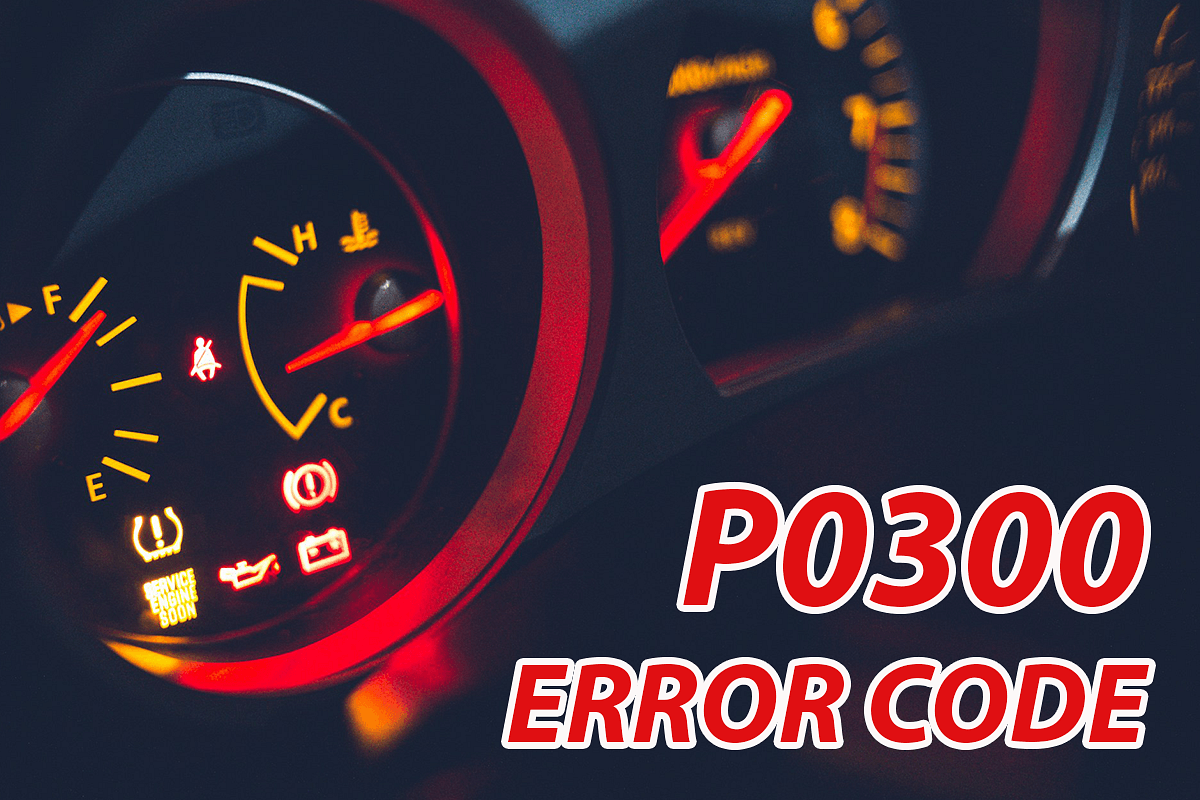
Related
The cause of this error code is serious enough to stop driving your car until it’s fixed.
- Code P0500 will show up when the car has vehicle speed sensor problems.
- Code P0715 shows up when there is an input shaft speed sensor malfunction.
- Code P0401 indicates insufficient flow from the exhaust gas recirculation.
- Code P0128 pops up when the coolant temperature is below the thermostat regulating temperature. Codes P0117 and P0116 also indicate engine coolant temperature problems.
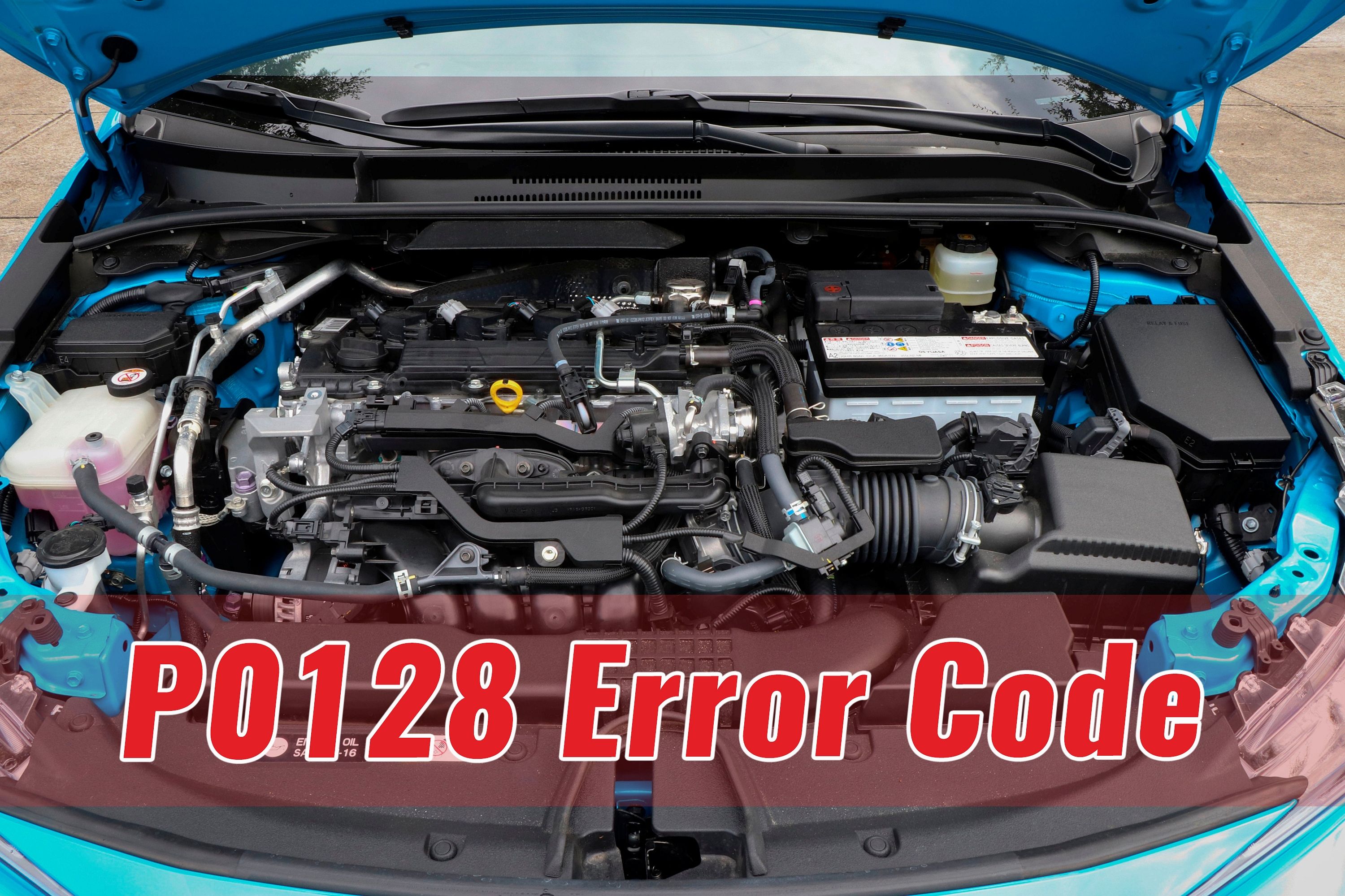
Related
P0128 Code: What It Is And How To Fix It
Wondering why your cabin lacks heat? Noticing a slight decrease in fuel economy or power? Your engine may not be operating at the correct temperature.
- Code P0420 is for a failed catalytic converter.
- Code P0441 indicates a leak in the EVAP system.
- Code P0456 is for a small EVAP leak, while Code P0455 is for a larger EVAP leak.
- Code P1641 indicates fuel pump primary circuit failure. This obviously indicates fuel pump problems, and you should check whether the car went in for the fuel pump recall.
- Code P0171 indicates mass airflow sensor problems. In this case, the system is running too lean.
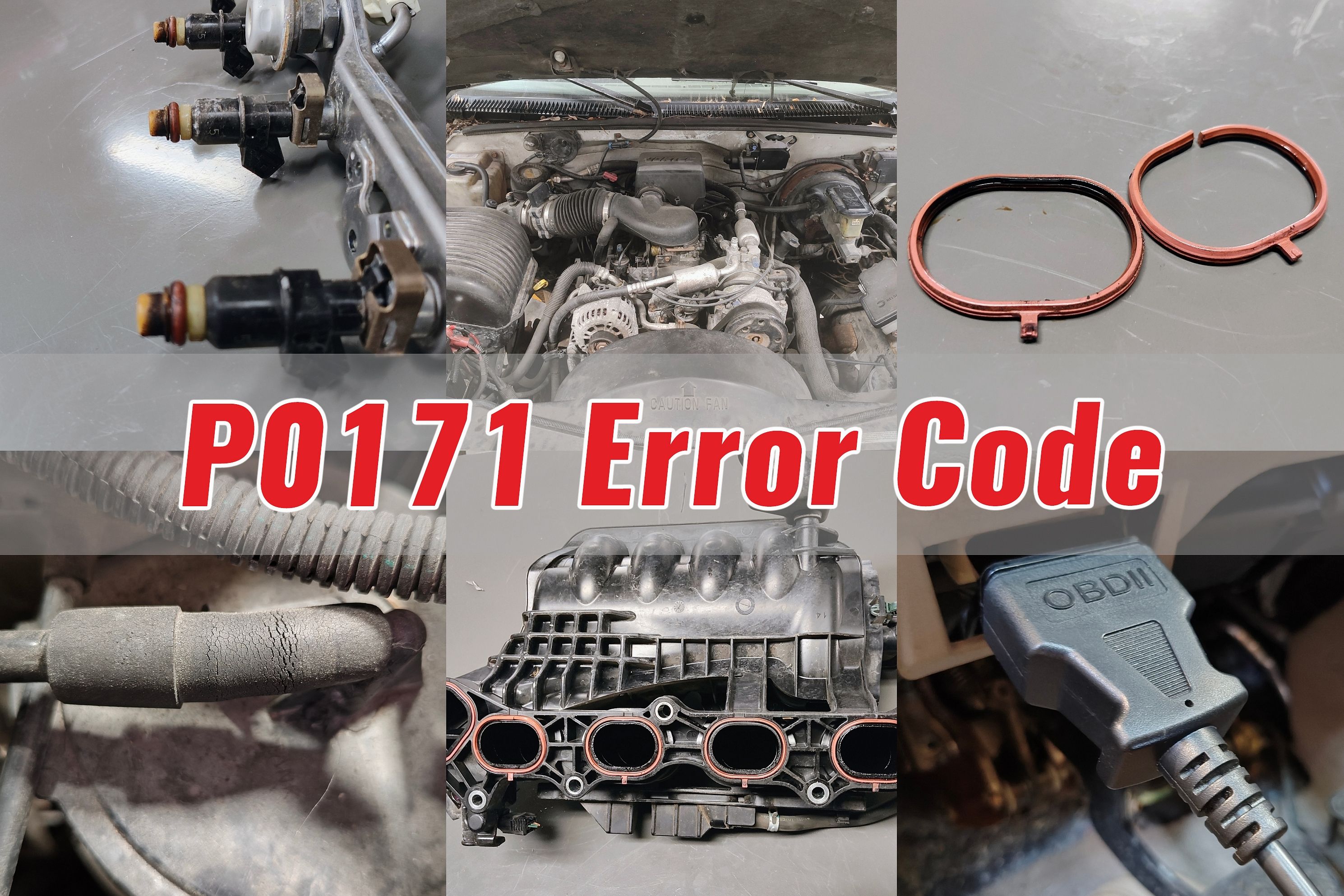
Related
P0171 Error Code: What It Is And How to Fix It
If your car has a rough, erratic idle and triggers the P0171 error code, there’s likely an issue with the air-to-fuel ratio.
- Code P0142 is an O2 sensor circuit malfunction.
- Code P0393 and Code P0335 indicate a problem with the camshaft and crankshaft positioning.
- Code P0011 indicates a problem with the camshaft position actuators.
- Code P0015 shows up when the camshaft timing is over retarded.
- Code P0C73 indicates that the water pump has failed. This needs to be checked out immediately as it can lead to severe engine and powertrain problems.
- Code P0990 will show up when the ECU receives a higher than normal voltage from the transmission fluid pressure sensor.
- Code P1603 indicates that there is a breakdown in communications between the ECU and the transaxle control module.
XV50 Common Problems
2AR-FE 2.5 Inline-four Engine Problems
The Toyota AR family of engines has been in production since 2008 and the 2AR is the 2.5-liter variant. It is a reliable engine that can exceed 200,000 miles without problems and a lot more if properly maintained. The AR has hydraulic valve lifters, so valve clearances never have to be adjusted manually; its timing chain is also maintenance-free as long as the engine gets fresh oil on schedule.
One of the most common problems on the 2.5-liter 2AR-FE used in the 2012-2017 Toyota Camry is water pump failure. The water pump presents various failure modes, one of which is leaking coolant externally. The other is a more serious internal failure, in which case it is unable to pump enough water through the cooling system, causing overheating and possible head-gasket and engine failure.
Knocking or rattling sounds on the 2AR engine upon a cold start that go away when the engine is running may point to failing variable valve timing (VVT) gears, for which Toyota issued a service bulletin T-SB-0041-13; it mainly affects 2010-2013 engines. Parts are cheap but labor is not. The VVT gears must be replaced to make the noise go away.
Mileage: We have not been able to determine firm mileages for the 2AR’s few failings, so keep an eye on any signs of overheating or water leaks that may indicate that a water pump is on its way out. The VVTi gears are not immediately detrimental to the engine’s health but will announce their trouble with the tell-tale noises.
Cost: Around $100-$200 for the water pump and $200-$400 for fitment. The VVT parts cost around $300 and the labor comes to around $450.
How to spot: A failing water pump may leave coolant on the floor, trigger the Check Engine light, and/or cause overheating. It may also leave coolant spots on the underside of the hood. Failing VVTi gears will cause knocking or rattling sounds on a cold start that go away when the engine is running.
2GR-FE 3.5-liter V6 Engine Problems
Around 2010, the 2GR-FE 3.5-liter V6 engine suffered various issues related to leaky VVTi hoses and failing auxiliary drive-belt pulleys, but these have all been solved through the use of updated parts and should not apply to the 2012-2017 Camry. Lubrication maintenance on these engines is very important, as they use non-replaceable cast-in iron cylinder liners that cannot be machined once they are worn or damaged – the entire block must be replaced. The camshafts use a chain drive that should be maintenance-free as long as the oil is replaced frequently. Ignition coils may fail at around 150,000 miles, which is still good going, but worth looking out for. Other than these few issues, the 2GR-FE is a very tough and reliable engine that should be able to reach 250,000 miles.
Mileage: Ignition coils often start giving trouble between 100,000 and 150,000 miles.
Cost: A new set of ignition coils costs around $200-$250 and you can install them yourself.
How to spot: Failed ignition coils will cause misfiring, rough idling, stuttering, and a loss of power.
Transmission Problems
Coming from a brand known for reliability, you’d expect minimal 2012-2017 Toyota Camry problems. There are a few things to look out for, however. There are known CVT automatic transmission problems in the early model years of this generation. Among the issues are jerky acceleration problems, slippage, shifting problems, and sudden loss of drive. The latter also resulted in stalling problems. While test driving, accelerate steadily from 20-50 mph several times to feel for any jerkiness or shuddering. It also pays to do several take-offs from a standstill. Numerous Camrys from the 2012-2014 period have had their gearboxes replaced, so be aware that this work may have been carried out. Ensure that any scheduled transmission checks have been carried out by looking at the service manual or contacting a dealer service advisor to find the service history of the vehicle.
The six-speed automatic transmission (UF760E in the four-cylinder and UF660E in the V6) is tough but prone to typical problems such as valve-body wear and carbon build-up if the oil changes are neglected. We recommend that you change the transmission fluid at least every 60,000 miles to prevent problems. These transmissions are also sensitive to the fluid used and without the specified Toyota WS fluid, they are prone to shudders, shift flare, and shift-solenoid pressure problems. Many of the possible issues can be traced back to the incorrect transmission fluid or low/dirty fluid and meticulous maintenance should keep it going reliably for a long time and prevent premature valve-body wear and problems with the pressure and solenoid-modulator valves. With advanced age, the U660E on the V6 cars can also exhibit case and bushing wear where the support for its main gear-train is mounted due to the high torque loads experienced in first gear.
Though not a common problem, some owners and Toyota mechanics have reported this specific leak. The seal between the engine and transmission fails, and it is a costly repair job. The torque converter can also fail on certain models, leading to hard shifting problems. It’s not so much a common problem, but rather something to keep in mind. If you do come across this problem, it’s best to walk away. If the car was abused, it’s bound to have more problems than just the gearbox. Torque converter problems are expensive to fix.
Mileage: From as early as 40,000 miles on abused and neglected six-speed transmissions. From around 53,000 miles on CVTs.
Cost: $5,000 or more for a transmission replacement and between $2,500 and $4,000 for repairs, rebuilds, and torque-converter replacements.
How to spot: Check the service history for a possible gearbox replacement. Go on a test drive and look for jerky or rough shifts, slipping, hesitation, stuttering, or an inability to select Reverse. The U760E six-speed automatic on the four-cylinder cars should not exhibit any shuddering after upshifts. Check underneath the car where the engine and transmission are connected. A basic image or video search will show you exactly where to look. That joint should be completely dry. If you do see a leak, walk away. While the seal itself is not expensive, the amount of labor involved makes the repair job ridiculously expensive.
Bluetooth Echo Problems
Bluetooth problems seem to be worst on 2016-2019 Toyotas and are very common. When conducting telephone calls, the user may hear echoes of their own voice that are so intrusive that a proper conversation cannot be conducted. Toyota acknowledged the problem by issuing a service bulletin in 2017, but never issued a recall. Toyota suggests a laborious workaround when this happens. You have to pick up your phone after initiating the call to check that the phone’s volume is set to maximum, after which you must adjust the head unit’s volume to less than 45, which makes the hands-free system rather pointless. You must do this every time you unpair a phone or update your phone’s software.
Mileage: Any mileage.
Cost: N/A
How to spot: Intrusive voice echoes while on a call.
Rodents Eating Wiring
A common problem with many brands, especially Toyota, Subaru, and Honda, is that these manufacturers use an environmentally-friendly, and cheaper, soy-based wiring insulation for the wiring harness. This attracts rodents, which chew the wiring and can cause a significant amount of damage and electrical problems. Various fixes include lacing the writing with rodent repellant or taping it with capsaicin tape, but you cannot protect all the wiring and rodents get into even the smallest nooks and crannies. The only solution is to avoid buying a car with wiring damage and then externally controlling rodents at the place where you keep your car.
Mileage: Any mileage.
Cost: Hundreds to thousands of dollars to repair damage and/or replace the wiring harness.
How to spot: Check for droppings and other signs of rodent activity, such as chewed wiring and random/intermittent electrical problems. Avoid a damaged car at all costs.
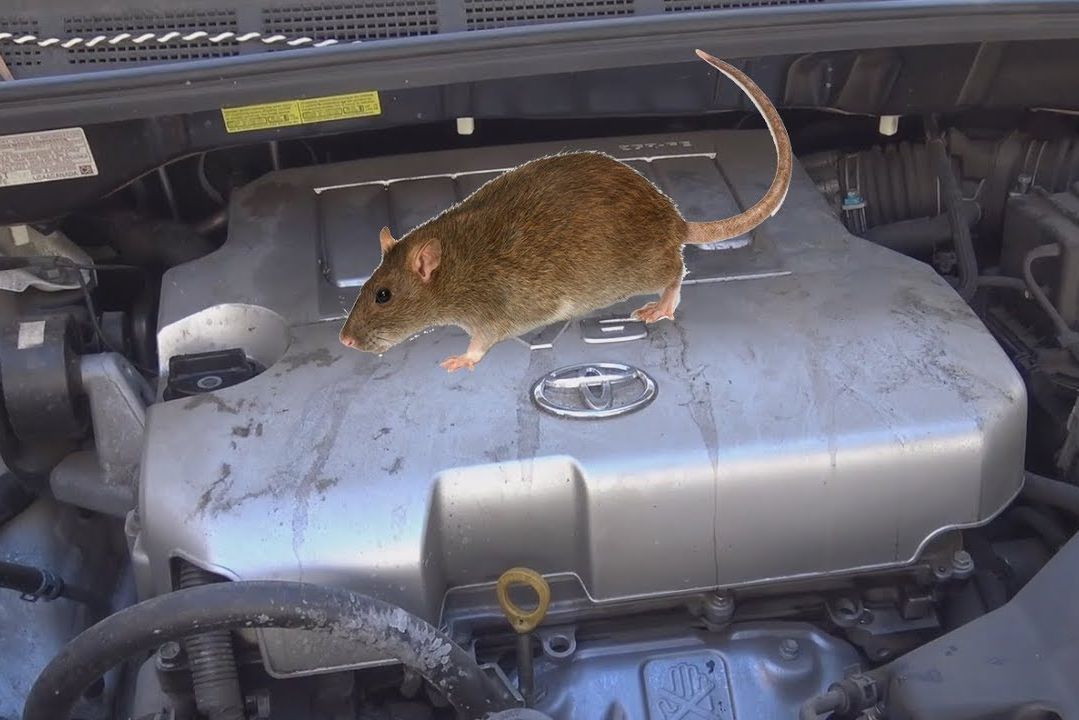
Related
Angry Toyota Owners Sue Again Over Engine-Eating Rodents
Yes, really. Rodents.
Unintended Acceleration
Although Toyota’s unintended acceleration scandal of the 2000s should be behind us by now, the 2012-2017 Camry was also known to be affected, so it’s worth checking the basics. In short, floor mats could get trapped under the accelerator pedal, jamming it open and causing it to accelerate. Faulty gas pedals could also be sticky and either jam open or return to the closed position too slowly. Check your Camry’s accelerator pedal action.
Mileage: Any mileage.
Cost: Free repair under recall.
How to spot: An accelerator pedal that is sticky or jams in full-throttle position and does not return to the undepressed position quickly after stepping on it.
Battery Degradation on Hybrid
Generally speaking, battery packs don’t last beyond ten years. That’s why most manufacturers only offer a ten-year/150,000-mile warranty on a battery pack. In fact, the unit in the Camry was guaranteed for eight years and 100,000 miles. If you buy an early model, you’re at risk of battery degradation. Replacing the battery pack will cost more than $3,500 before any labor, so it is unlikely to be worth it on an old, cheap Camry. Having said that, Toyota has more experience with hybrids than most, but take caution when buying one of these models. This will be one of the most common future hybrid problems.
Mileage: Around 150,000 miles
Cost: N/A
How to spot: The easiest way is to check the average fuel consumption. If it’s way off the claimed and user figures we provided, the battery is no longer working optimally.
Low Idle and Stall
This is not a common problem, but worth looking out for on a model without a service history. The throttle body and MAF sensor need cleaning every 30,000 miles, which would normally be done during a service. If not, the car will idle too low and eventually stall.
Mileage: At 30,000-mile intervals
Cost: A full service should cover it, which costs between $300 to $600.
How to spot: Start the car when it’s cold and check the idle speed. A Camry usually idles at around 1,200 rpm.
Abused Brakes
As with the transmission, you need to keep the previous owner’s driving style in mind, particularly with the V6 model. The Camry has perfectly adequate brakes but they were not designed with constant hard braking in mind. When driven hard, a V6 Camry’s brake pads and discs will wear out before the recommended interval at which they should be changed. The Camry is often unfairly associated with brake and brake booster problems, but a previous owner’s abuse is hardly the manufacturer’s fault.
Mileage: Unknown
Cost: $500 for OEM replacement parts
How to spot: The steering wheel will vibrate under light braking if the rotors are warped, you’ll hear a scraping sound from the wheels, and you can check the color of the discs. If a brake disc has a blue tint to it, it means it has been overheated many times.
Moldy Air-Conditioning Smell
The air-conditioning unit did not get rid of excess water effectively, which led to mold building up. There is both a quick fix and a more expensive longer-lasting fix. The quick fix is a simple cabin filter, or you could give the entire air conditioner assembly an antibacterial clean. This is the most common of the air conditioner, climate control, AC, and AC compressor problems. We’d just buy an air-conditioning disinfectant spray and use it as directed to kill the germs and remove the smell. It’s a cheap, easy fix.
Mileage: Any mileage but typically becomes apparent at around 13,000-30,000 miles on average.
Cost: $15 to $40 for cabin filter and between $100 to $300 for cleaning. Just $10 for a disinfectant spray.
How to spot: You’ll notice a stuffy, moldy smell when using the air conditioner.
Less Common Problems
Throughout its lifecycle, a small percentage of owners complained about back and front bumper problems. Apparently, the bumper colors don’t match the body color. Various people complained about the quality of the paint too and said it tends to bubble, flake, and peel, so check the condition of the paintwork, especially in rust-belt states, because repairs and repainting can add up to thousands of dollars. If the model you’re considering has a sunroof, be sure to check potentially problematic sunroof switches. Numerous owners have reported early model Camry sunroofs getting stuck in the open position due to faulty switches.
A few owners also complained about Bluetooth problems. Early Bluetooth systems were notoriously finicky across the board, and it’s not just a Toyota problem. A few owners complained about radio touchscreen problems, including the system being buggy, the navigation not working properly, and the screen going blank, not to mention the small percentage of automatic door lock problems. The latter is usually rectified by fitting the keyfob with a new battery, which means it’s just the usual wear-and-tear key fob problems. There are no common electrical problems, but a few owners complained about different electrical components on the car. These include headlight, power seat, sunroof, blind-spot monitor, ABS, automatic window, USB charging system, instrument cluster, and dash display problems.
A few people noted suspension problems, but these were subjective issues. The Camry was built for comfort, and the cushy ride quality is likely just concerning to some people. Other than the recalls, there are no known suspension issues. Excessive oil consumption does not seem to be a major concern but it does pop up and often points to a blocked positive crankcase ventilation (PCV) valve that should be serviced.
Which One To Avoid
Avoid all of the pre-facelift models, especially the more problematic 2012 model year, if only because of the increase in safety features after the facelift. The L trim was poorly received and feels low-rent. The gearbox problems were also limited to earlier models. The pre-facelift models also have a slower infotainment system with fewer features. As a whole, we’d skip the SE and XSE trims. These models try to be sporty, but they fail. The bigger wheels and stiffer suspension ruin one of the Camry’s most important features, which is the ride quality. We’d also avoid hybrids, if only because of the potential risk of having to replace the battery pack.
Which One To Buy
The facelifted V6 XLE is the way to go. It has all of the luxuries, and you get the silky-smooth V6 and six-speed automatic transmission combination. The difference in fuel consumption between it and the four-cylinder is less than you might expect. These are not engaging cars. A Camry is a car designed to cruise along effortlessly, and the XLE V6 does this the best. The V6 models also get additional equipment. They’re cheaper too, but in the long run, they don’t hold resale value quite as well. If you’re limited by budget, we’d recommend an earlier V6 XLE. Just make sure the gearbox has been sorted and well-maintained. Other than that, the XV50 7th-generation Camry is pretty much bulletproof.
7th-Gen Toyota Camry (XV50) Verdict
While the sixth-generation Camry isn’t the most exciting to drive, it is extremely reliable, affordable to buy and run, and a very comfortable and well-equipped vehicle. From 2012 to 2014 before the facelift, there were some issues, but on the whole, this generation has proven to be extremely reliable. It isn’t an engaging car, but it will serve your basic needs well and you’ll likely not find much to complain about in the long run.

